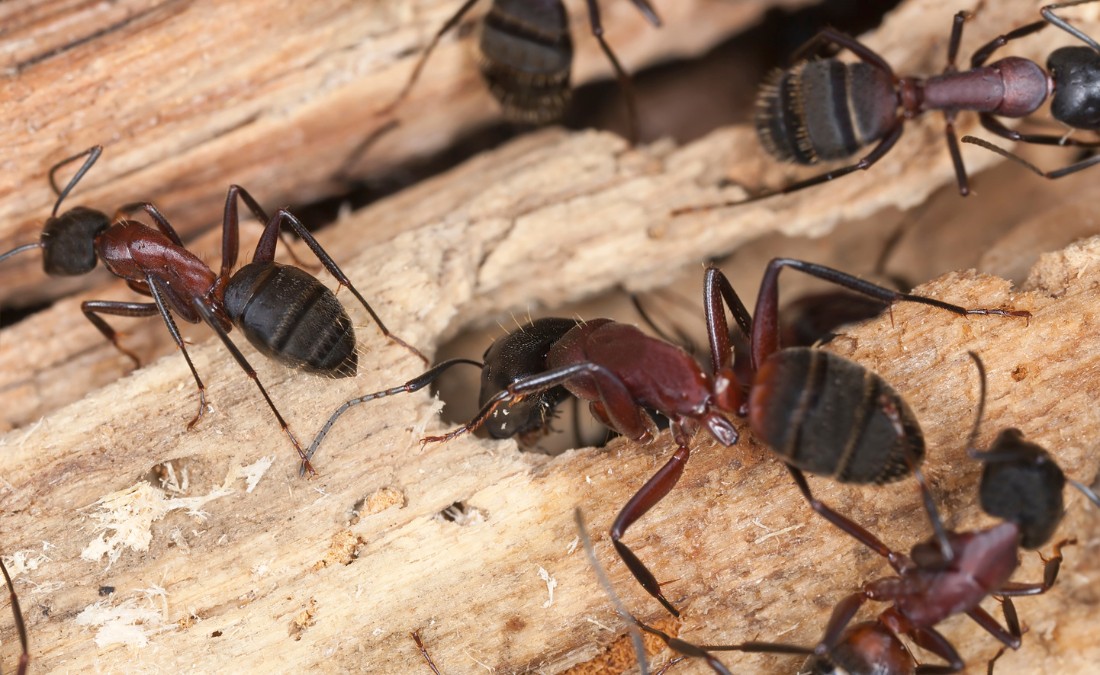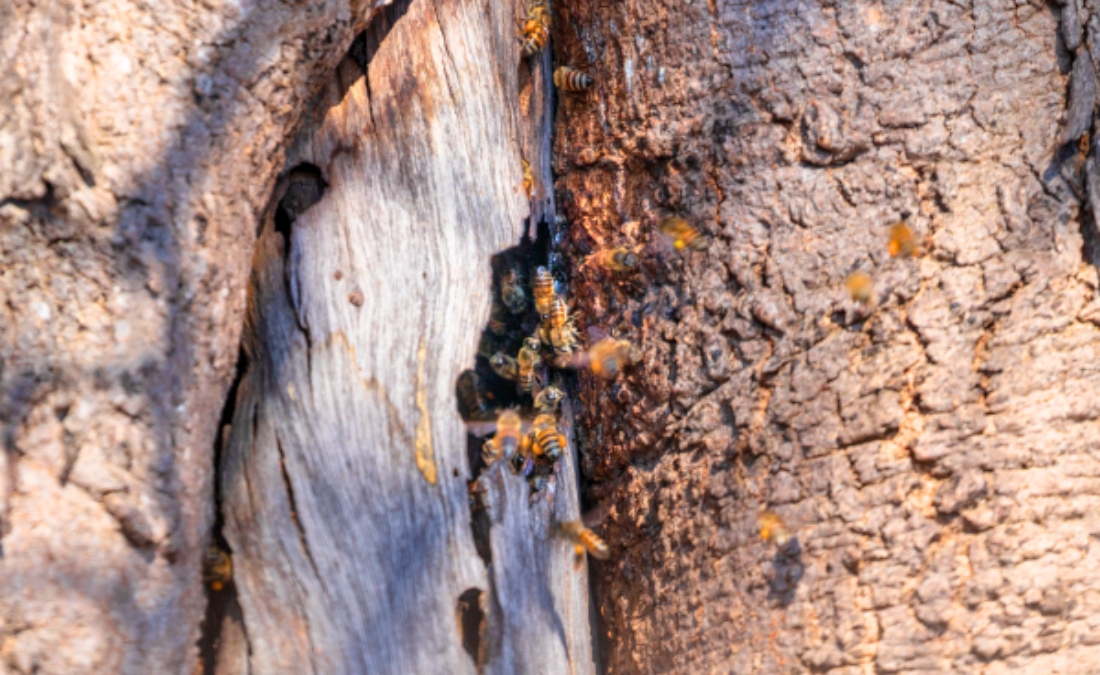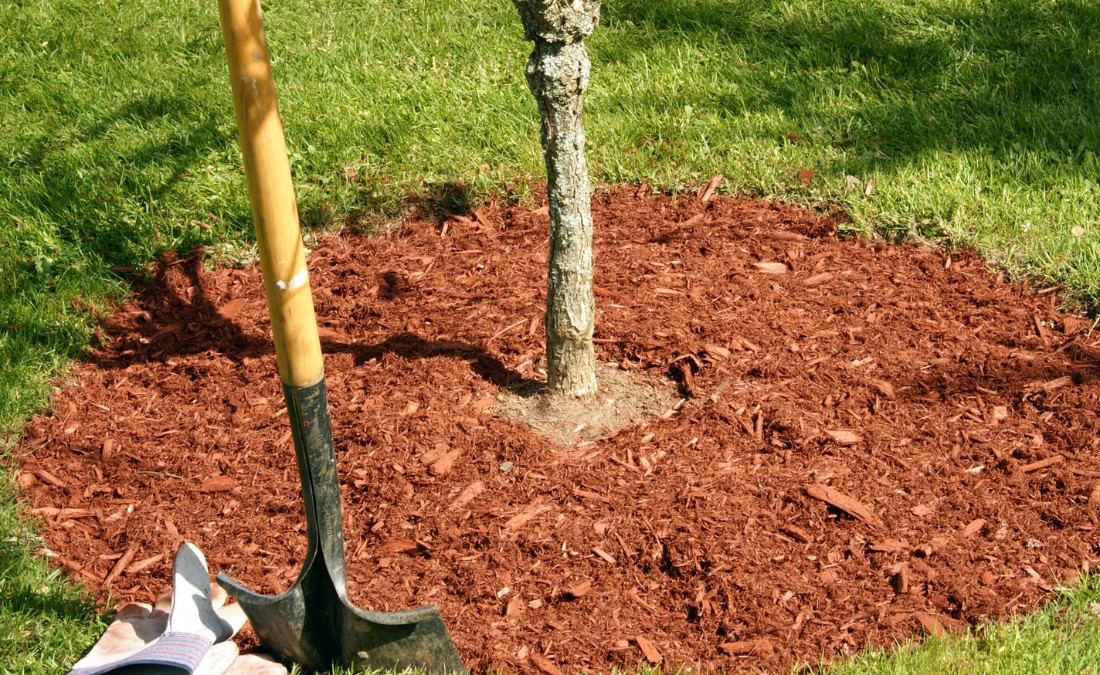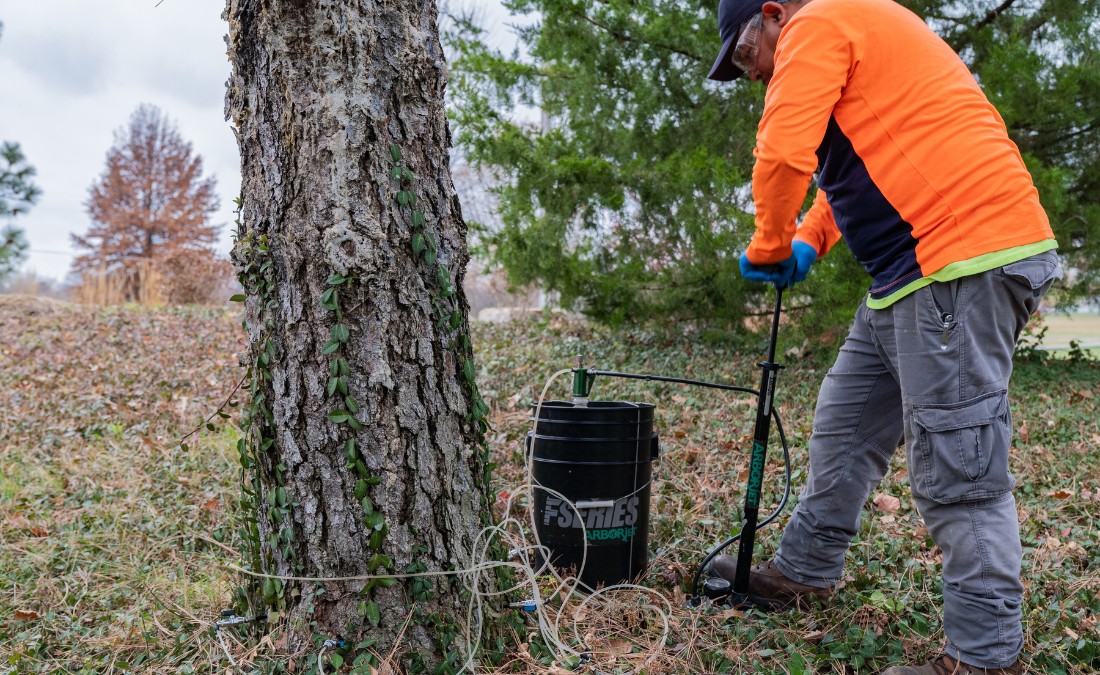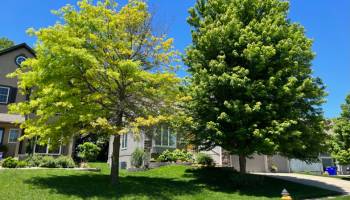Winter Tree Pruning: How To Keep Your Kansas City Trees Healthy & Resilient
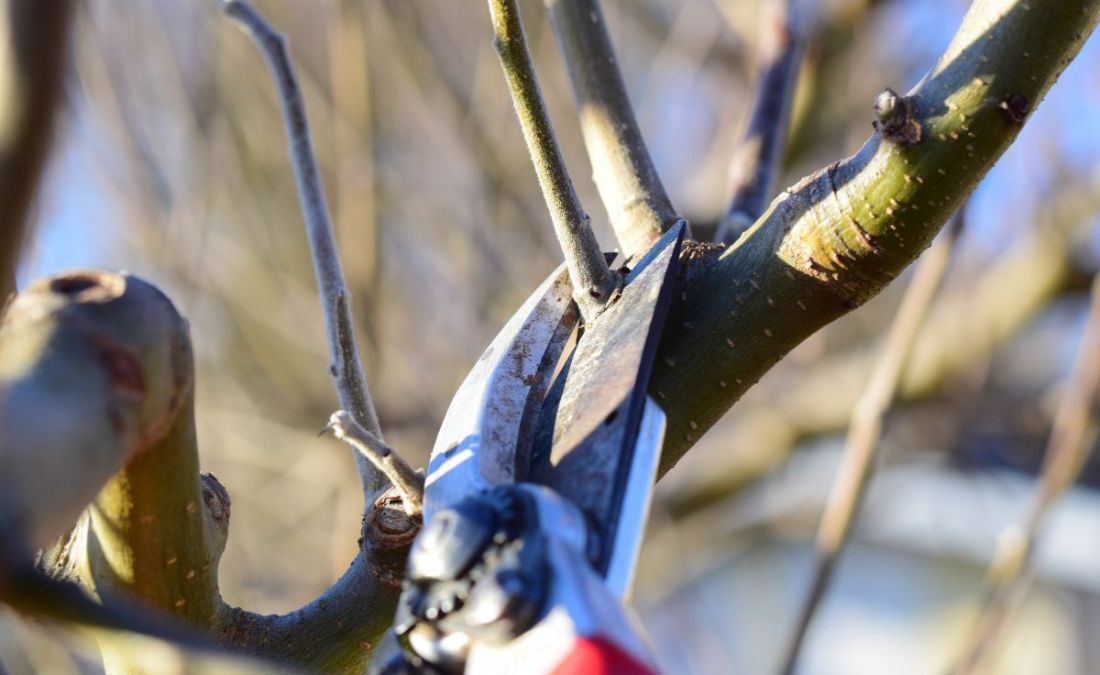
Winter tree pruning isn’t just a task – it’s an investment in your tree’s health. Learn how Arbor Masters can prevent damage, promote growth, and more.
Winter tree pruning isn’t just another seasonal chore – it’s an opportunity to set your trees up for long-term health and safety. By encouraging healthy growth, reducing the risk of storm damage, and protecting your property, winter pruning is one of the best investments you can make in your landscape. In Raytown, where unpredictable winter weather can take a toll, timely pruning helps your trees stay strong and resilient throughout the season.
Key Takeaways:
- Winter pruning allows the tree to heal without triggering new growth too early, helping it conserve energy and recover during dormancy while also giving it time to close wounds before pests and diseases return in the spring.
- The “5 D’s” of pruning – dead, diseased, dying, damaged, and dangerous – should guide what to remove for tree safety and health.
- Certain trees, like maples, birches, and flowering trees, should not be pruned in winter to avoid sap bleeding or cutting off blooms.
- Skipping winter pruning increases the risk of storm damage, unhealthy growth, and pest infestations, ultimately harming your tree’s long-term health.
- The recovery time after winter pruning depends on factors like tree species, the extent of pruning, tree health, and environmental conditions, with full healing potentially taking several years.
What Happens If You Prune in Winter?
Thanks to their natural dormancy, winter is one of the best times to prune trees. During this time, leaves fall off, growth slows, and the tree enters a state of rest. This makes spotting and removing weak, damaged, or overgrown branches much easier. Removing these unnecessary branches now allows the tree to focus its energy where it matters most – on healthy new growth and stronger limbs come spring.
Another benefit of dormant pruning is that it allows the tree to heal without being prematurely stimulated to produce new growth. While pruning typically encourages new growth, doing so during dormancy prevents the tree from putting energy into growing new branches before it’s ready. This timing also gives the tree plenty of time to close its wounds before pests and diseases reemerge in the spring.
What You Should Prune: The 5 D’s of Pruning
When it comes to pruning, knowing what to remove is just as important as knowing when to prune. The best approach is to focus on what we call the “5 D’s.” Here’s what you should look for:
- Dead: Branches that are completely dead can pose a hazard by falling unexpectedly or allowing pests and diseases to settle in.
- Diseased: Diseased branches should be removed to prevent the infection from spreading to the rest of the tree.
- Dying: Branches that are dying or in decline are weak and can hinder the tree’s growth, so it’s best to remove them.
- Damaged: Damaged branches from storms or other factors can weaken the tree and lead to further injury if left unaddressed.
- Dangerous: Branches that grow too close to structures, power lines, or other trees should be removed to avoid safety risks.
While the “5 D’s” are a great pruning guideline, some of the branches that fall within these categories aren’t always immediately obvious. Correctly identifying potentially hazardous branches requires a trained eye and a deep understanding of tree health. This is why it’s always important to have a Certified Arborist perform tree pruning.
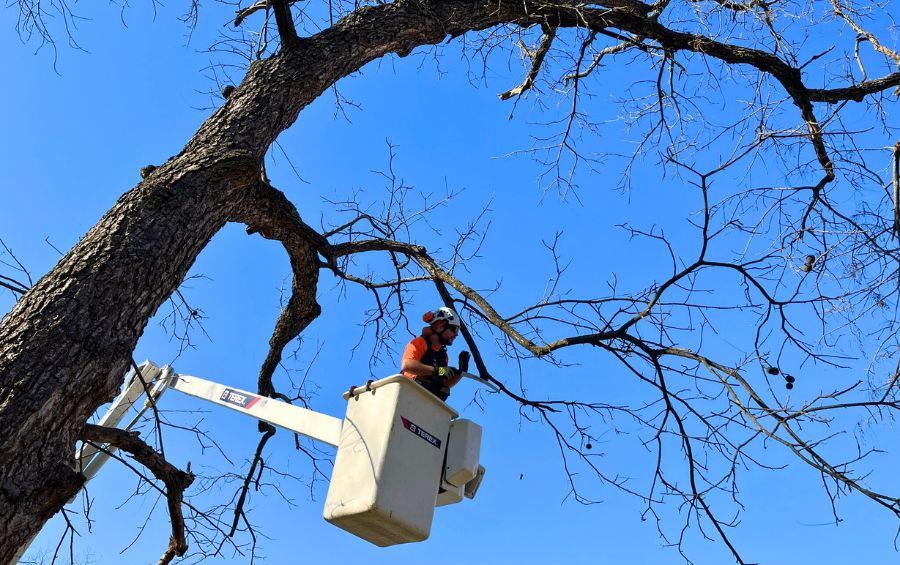
Which Tree Species You Should Not Prune in Winter
While winter is generally an ideal time to prune, there are some exceptions to be aware of. Trees like maples, birches, and walnuts are particularly sensitive during the winter months. Pruning these trees while they’re still dormant can cause them to “bleed” sap from their wounds. This sap flow, although not extremely harmful in the short term, can attract unwanted insects and increase tree stress.
Another important consideration is flowering trees such as magnolias, cherries, and dogwoods, which should not be pruned in winter either. These trees form their flower buds in the fall, and pruning during dormancy can inadvertently remove them, reducing or eliminating blooms for the coming spring.
To avoid cutting off valuable blooms or causing unnecessary sap bleeding, wait until late spring or early summer to prune.
What Happens If You Don’t Prune in Winter?
Skipping winter pruning can lead to a range of problems for both your trees’ health and your safety. If you leave potentially hazardous branches unattended, the risks to your tree and property grow as the season progresses.
Here’s what can happen if you don’t take care of these branches in winter:
- Increased Risk of Storm Damage: Weak or damaged branches are more likely to break during storms, causing significant damage to the tree or nearby structures.
- Unhealthy Growth: Dead or dying branches can prevent the tree from focusing its energy on healthy new growth, leading to weaker limbs and slower recovery.
- Attract Pests and Diseases: Damaged or weakened branches create entry points for pests and diseases, further compromising the tree’s health and hindering its ability to thrive.
- Safety Hazards: Low-hanging or overgrown branches can pose risks to people, pets, and property, especially with multiple severe weather events that occur in the Raytown, Missouri, area throughout the year.
How Long Does It Take for a Tree to Recover from Winter Pruning?
The recovery time for a tree after winter pruning can vary based on several factors, including:
- Tree Species: Different tree species have different growth rates and healing processes. Some trees, like oaks, recover more slowly, while others, like willows, heal more quickly.
- Extent of Pruning: The more significant the pruning, the longer the recovery period. Light pruning may only take a few weeks for the tree to heal, while heavy or extensive pruning could take several months.
- Tree Health: A healthy tree will recover more quickly from pruning than a stressed or weakened one. Trees that are already dealing with disease or damage may take longer to bounce back.
- Environmental Conditions: Temperature, moisture, and overall climate conditions can affect how quickly a tree recovers. Favorable weather conditions, such as mild temperatures and adequate rainfall, can speed up healing, while extreme conditions may slow the process.
CODIT: A Tree’s Natural Healing Process
When a tree is pruned, its natural defense mechanism, known as compartmentalization of decay in trees (CODIT), kicks in almost immediately. The tree begins to seal off the wound by forming barriers around the injured area to protect it from pathogens and decay. This process helps limit the spread of damage and ensures that healthy tissue remains unaffected.
However, while CODIT begins right away, complete healing of the wound can take several years, depending on the size of the cut and the tree’s overall health.
How to Minimize Stress on a Tree During Winter Pruning
Pruning can be a stressful process for a tree, even when done at the right time. To help your tree recover more quickly and stay healthy, it’s important to minimize the stress caused by pruning, especially during winter.
Here’s how to achieve the best results while reducing stress on your tree:
- Prune Only When Necessary: Avoid excessive pruning. Only remove branches that are dead, damaged, or pose a safety risk. The more you prune, the more stress the tree will experience, so focus on removing only the problematic branches.
- Make Clean Cuts: Ensure that all cuts are clean and smooth. Ragged or torn cuts can make it more difficult for the tree to seal the wound, increasing the potential for infection or further damage. Use sharp, well-maintained pruning tools that are sanitized in between trees to create clean, precise cuts.
- Prune in Phases: If you need to make major cuts, consider spreading them out over a couple of seasons. Gradually reducing the size and weight of the tree’s canopy will help it recover more quickly and reduce stress compared to removing a significant amount of foliage all at once.
- Don’t Over-Prune Young Trees: Young trees are more vulnerable to stress, so avoid heavy pruning during their early years. Instead, focus on shaping the tree and removing only weak or poorly positioned branches. This will ensure strong, healthy growth as the tree matures.
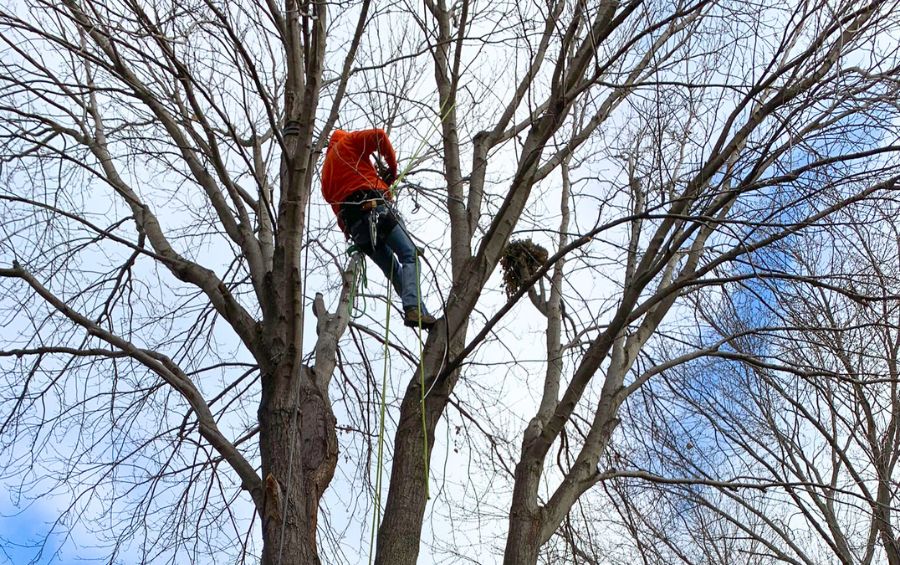
Trust Arbor Masters for Professional Winter Pruning in Raytown
Winter pruning is just one important part of keeping your trees healthy, safe, and strong, but it’s not a task to be taken lightly. Proper pruning requires skill and expertise to minimize stress on the tree and ensure the best possible outcome. At Arbor Masters, our Certified Arborists have the knowledge and experience to prune your trees with precision and care, helping them thrive through the winter and beyond.
Don’t leave your trees’ health and safety to chance. Call Arbor Masters today at 816-524-3131 for professional winter pruning services in Raytown, Missouri.

Want More Like This?
Get the latest local news, tree care tips, special offers, and company updates directly to your inbox! It's easy to subscribe and there's no spam - we promise.
"*" indicates required fields

